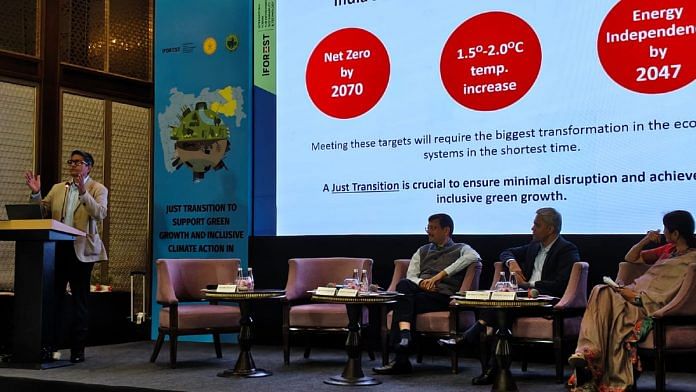Mumbai: Maharashtra’s energy-rich Chandrapur-Nagpur-Yavatmal (CNY) belt has the potential to attract Rs 5.4 lakh crore in investment and contribute 4 percent to the Gross Domestic Product (GDP) of Vidarbha region by 2035 if converted into a green hub, a report by a New Delhi-based think tank has claimed.
The International Forum for Environment, Sustainability and Technology (iFOREST), in collaboration with the Maharashtra government, released the report titled ‘Regional Just Transition Investment Plan, Chandrapur-Nagpur-Yavatmal Region’ Wednesday.
The CNY region, which accounts for all of Maharashtra’s coal production and half its coal-based thermal power capacity, is considered the state’s energy backbone.
However, with ageing power plants and several mines facing resource exhaustion, the region’s coal production capacity is projected to decline by half and coal-based power production capacity by a quarter in the next 10 years, said the report.
According to the report, the region has an estimated six lakh workers who depend on coal mining and allied work. About 1,253 operational factories in the state are energy-intensive.
Laying out a 10-year blueprint, the report says that 3.4 lakh direct jobs can be generated through the green transition, but would require Rs 33,000 crore in funding through public investment and contributions from coal mining companies and power utilities.
The costs will include expenditure on land reclamation and repurposing, worker skilling, capacity building, and institutional strengthening.
“The Regional Just Transition Investment Plan is an actionable blueprint to turn this traditional energy cluster into a green investment destination. By developing strategic economic nodes and unlocking the region’s renewable energy and industrial potential, the plan promotes inclusive green growth in the region,” said Chandra Bhushan, CEO of iFOREST.
Maharashtra chief secretary Sujata Saunik in a video message at the presentation thanked iFOREST for the report and said the state government will consider the blueprint.
“A green transition is not the only thing we need to do; in terms of phasing out coal, it is also about bringing new avenues for green growth and ensuring that the shift is far-reaching and fair. Our focus should be to attract investment for the development of renewable energy projects and green industrial clusters. We also need to expand electrification from personal vehicles to commercial transportation,” Saunik said.
“This transition will be driven by policy frameworks that unlock green finance and support innovation. Maharashtra has consistently led from the front in adopting progressive policies for climate resilience and sustainability,” she added.
Praveen Pardeshi, chief economic advisor to the state and CEO of state government think tank Maharashtra Institution for Transformation (MITRA), said, “Forty percent of Maharashtra’s energy is used by farmers to pump water for irrigation. Moving them to solar pumps is our biggest ongoing success story. We need innovative nudge policies and behavior change incentives to support a transition of this scale from traditional energy sources.”
The 10-year blueprint identifies three Economic Development Nodes—Bhadrawati–Wani, Rajura–Chandrapur and Umrer—which can together repurpose 6,000 hectares of coal mine land into green energy and industrial hubs.
According to iForest, a thorough planning approach is needed that includes geospatial mapping, regional SWOC analysis and evaluation of macroeconomics related to employment and the region’s GDP.
The report said the Bhadrawati-Wani mine cluster, as a node, can be used to develop green hydrogen and green chemicals with a proposed investment of Rs 2.63 lakh crore.
The Rajura-Ballarpur mine node can be used for EVs and battery manufacturing with a proposed investment of Rs 2 lakh crore.
And the Umrer mine node can be used for semiconductor and advanced technology in automotive and industrial electronics, with a proposed investment of Rs 16,600 crore.
For this, Bhushan said the support of the government is necessary.
“Our aim is to reduce the disruption of climate change and lock in the target of 2 degrees Celsius climate change. We are currently an energy-insecure nation, but there is a roadmap to convert us into an energy-secure country. And this is exactly why we are presenting this roadmap, and no other state is better than starting from Maharashtra, which is the most industrial state,” said Bhushan.
(Edited by Sugita Katyal)
Also Read: A meteorite crashed into Maharashtra village. And a chase for Rs 15 lakh & missing piece






